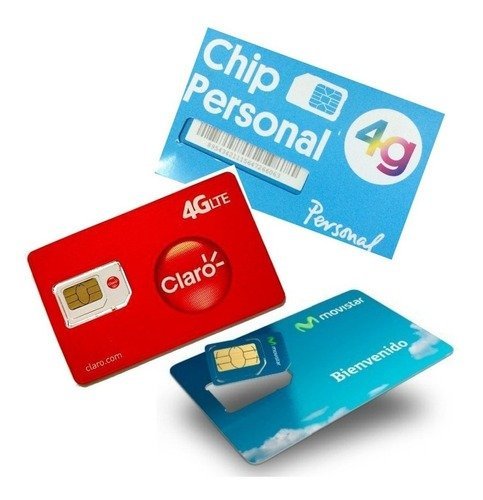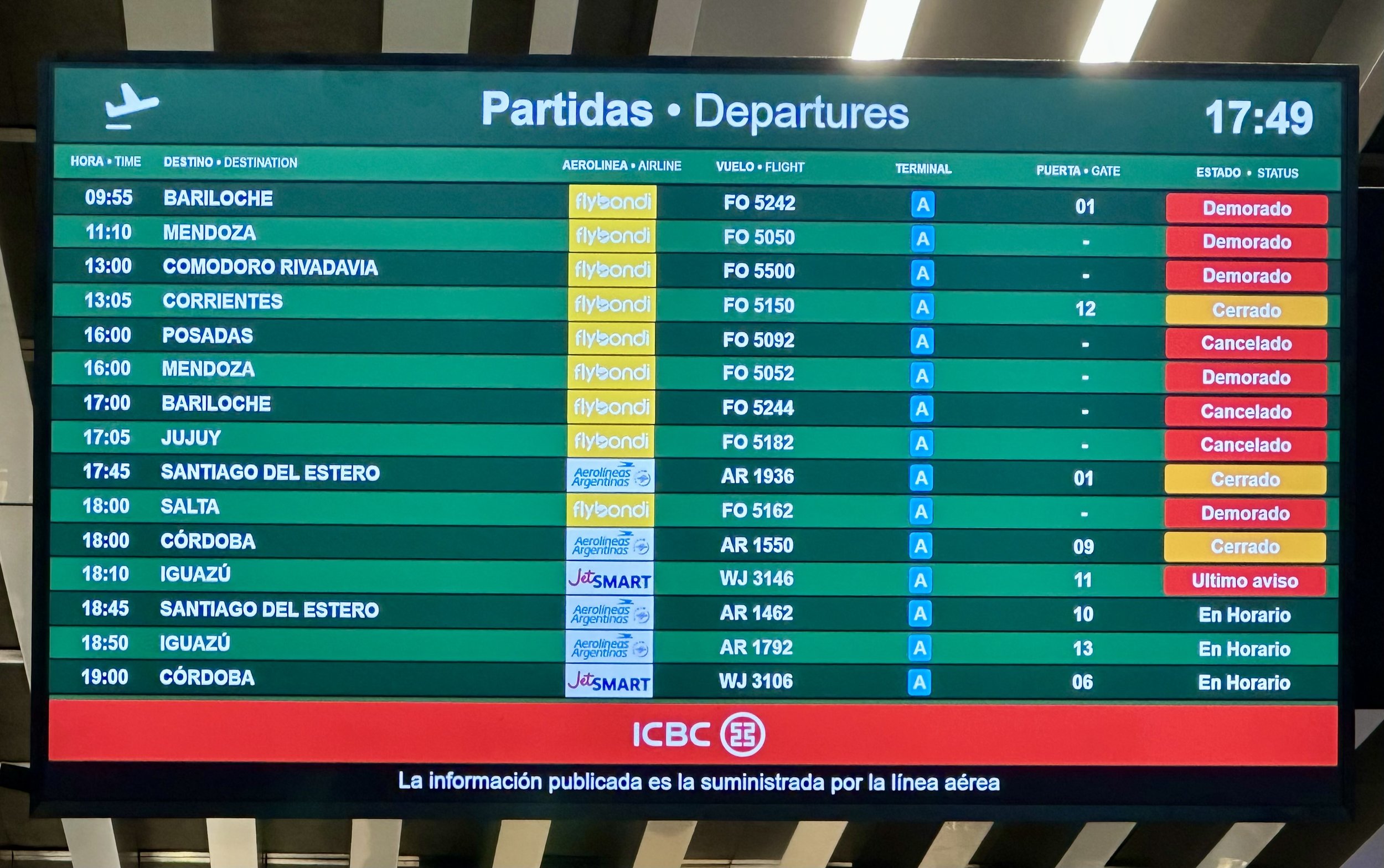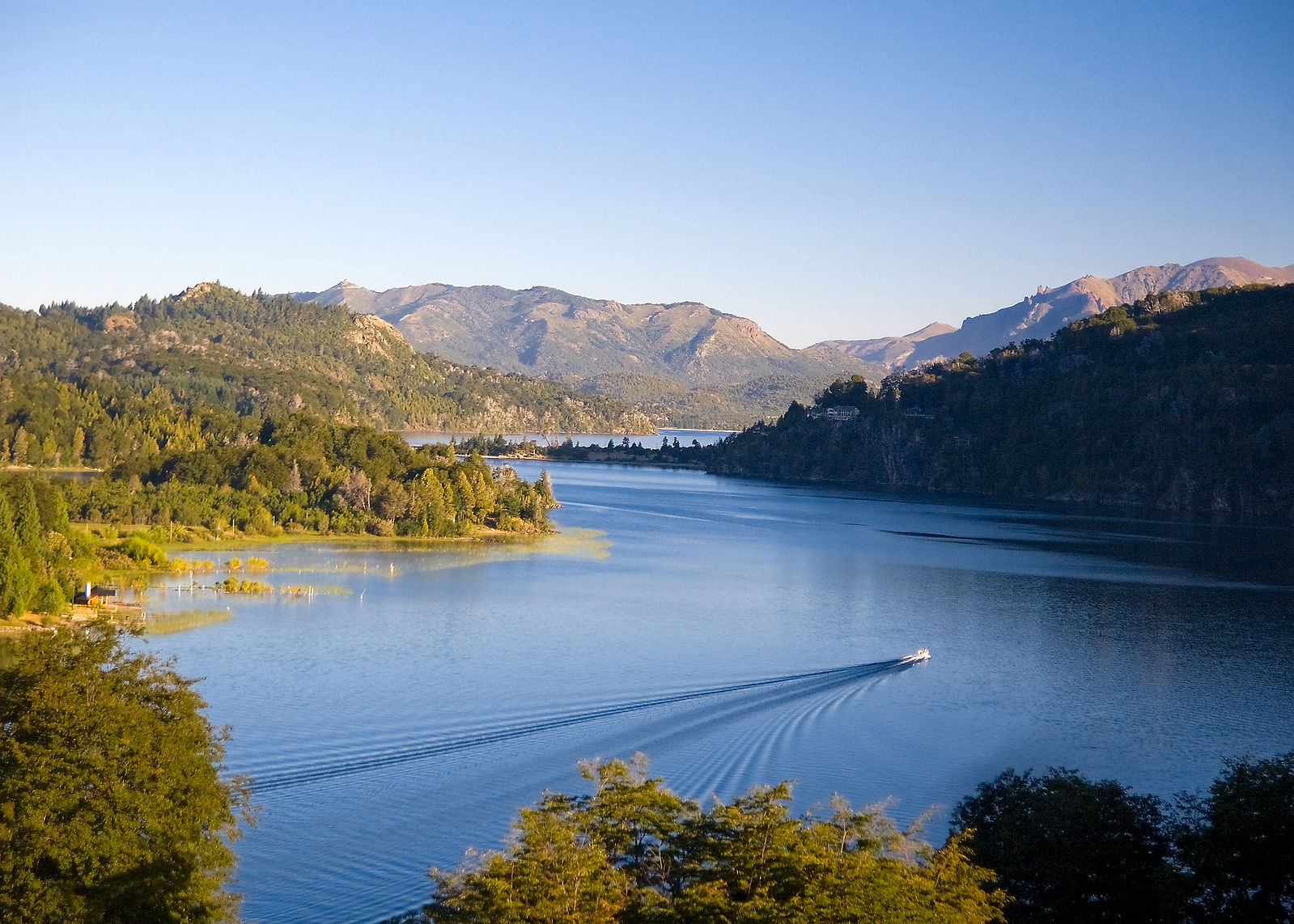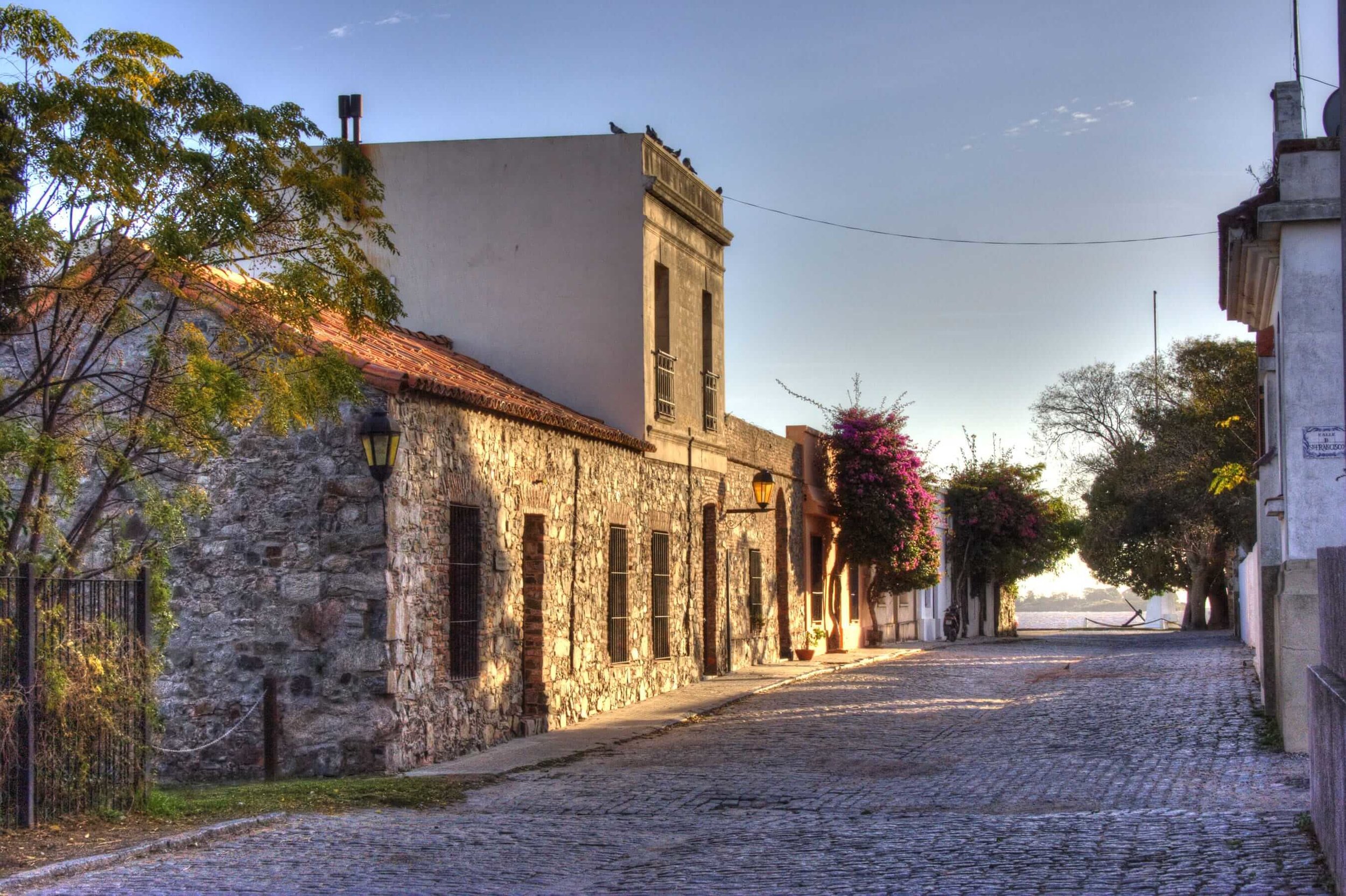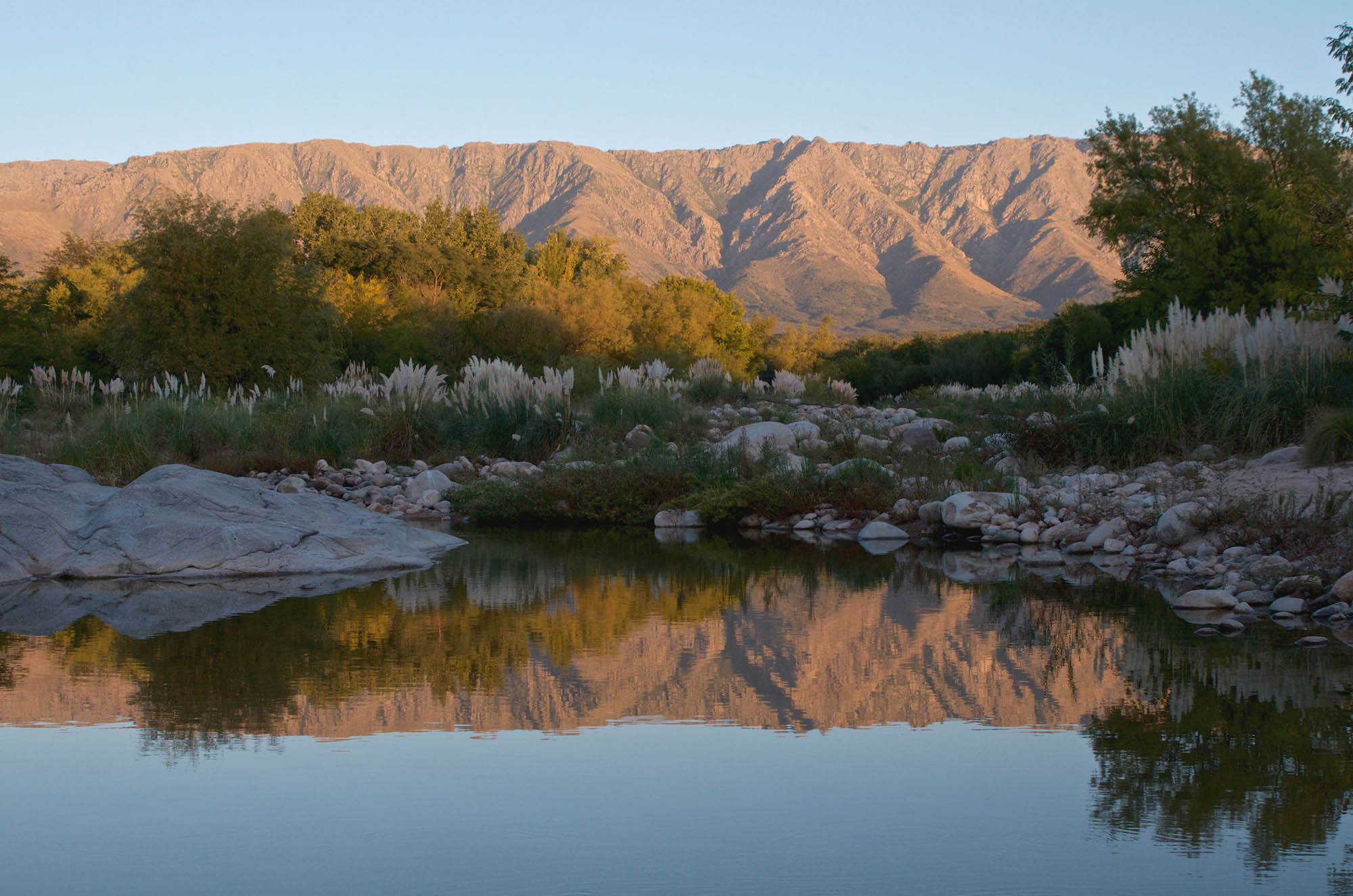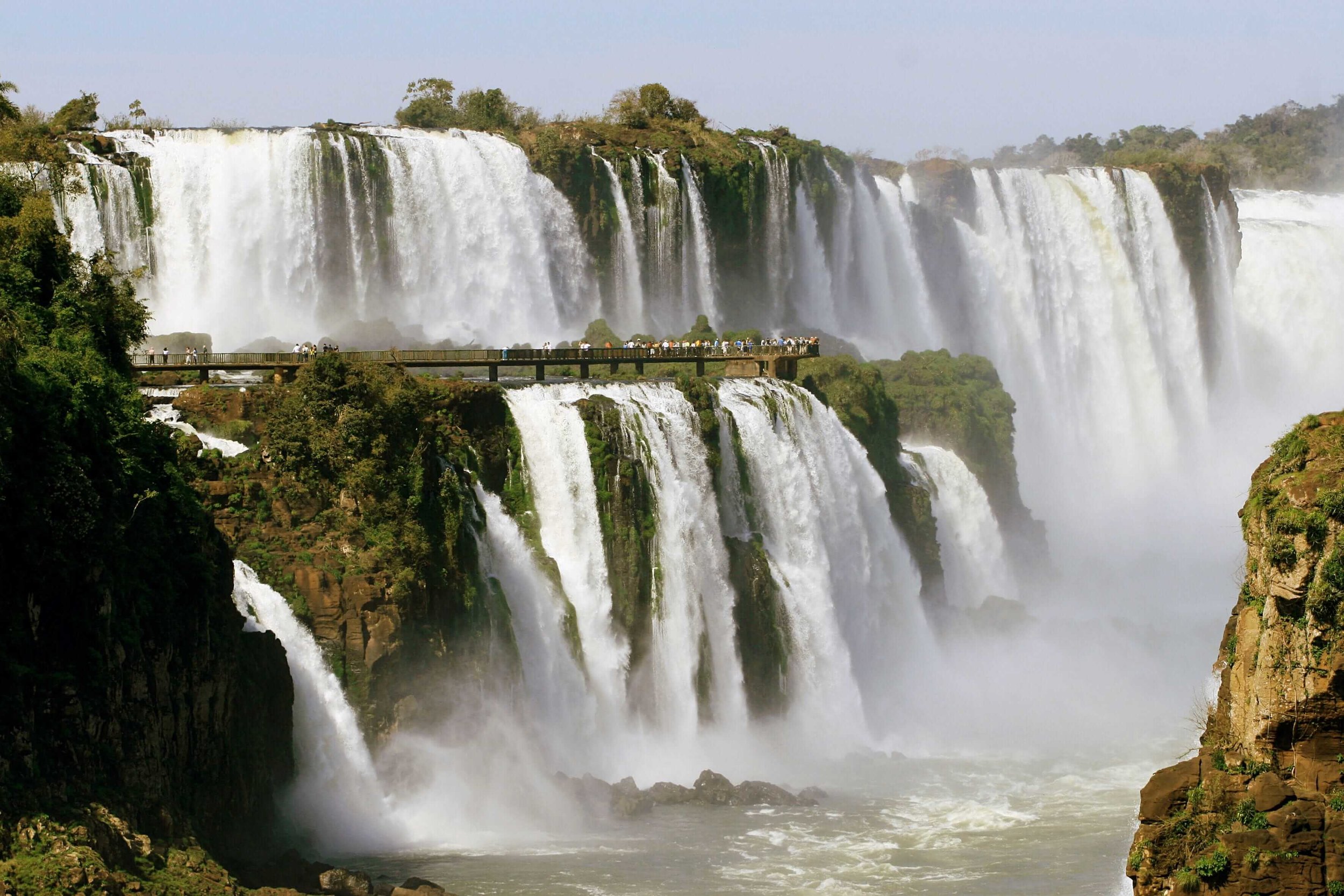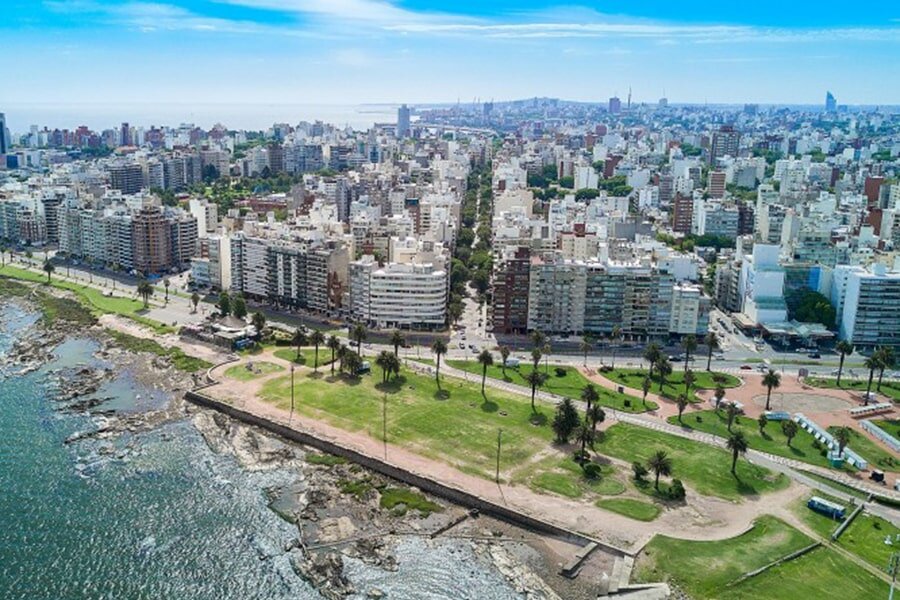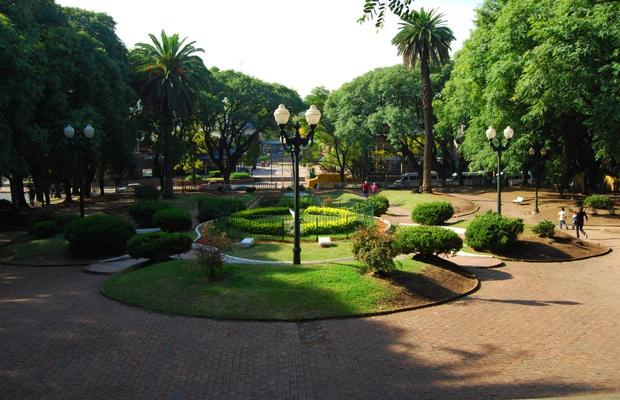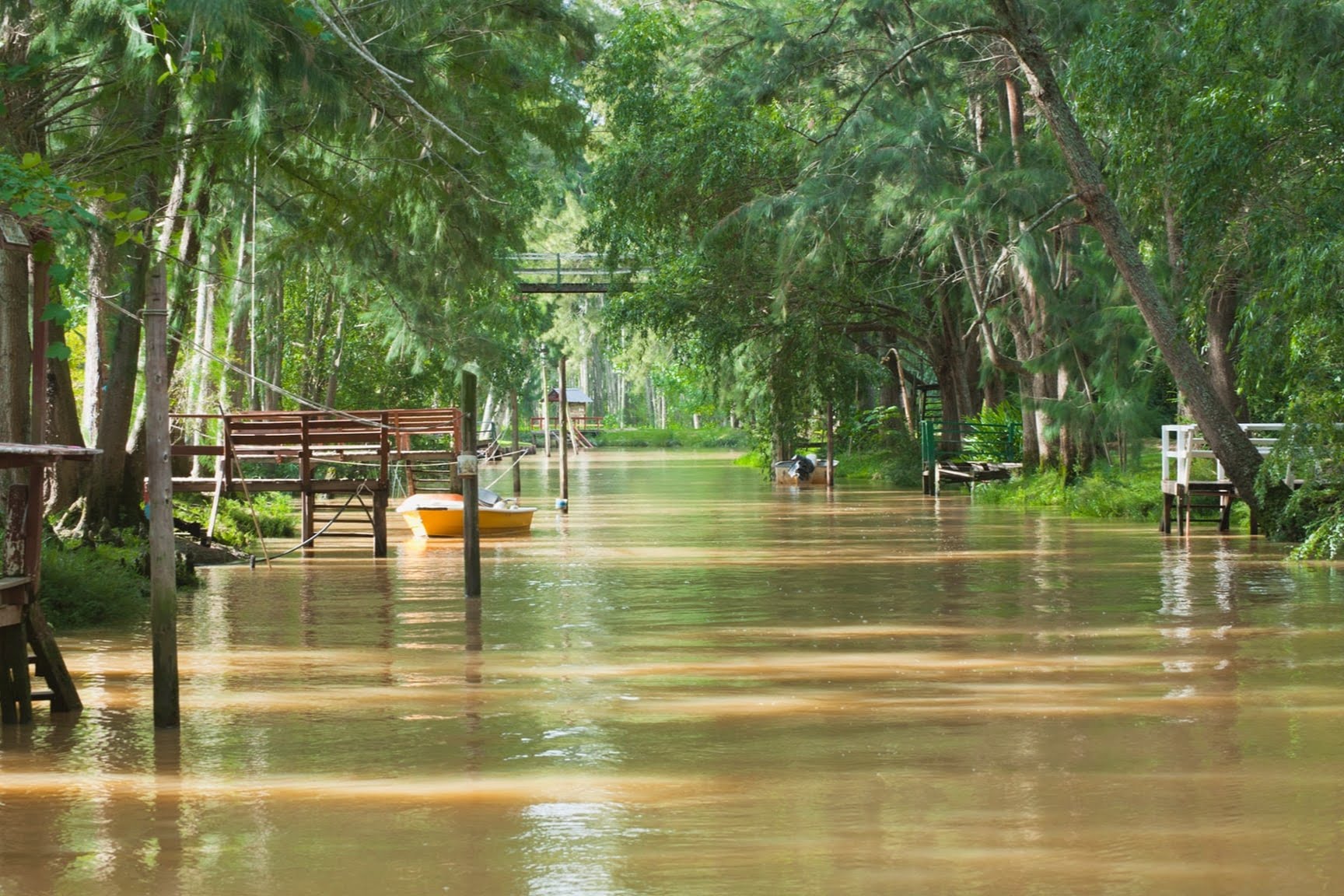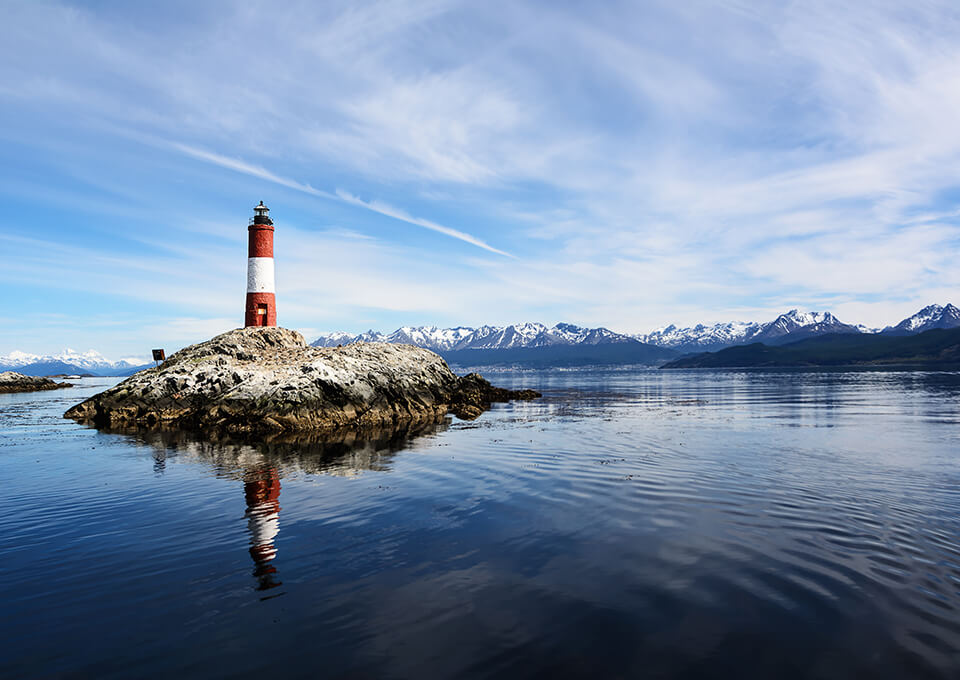LIVING ABROAD GUIDE SECTIONS:
Emergencies
The Puentes team is available 24 hours a day, 7 days a week in case of an emergency. Please review the following emergency guide for your program’s destination city and also share it with a parent or guardian:
Puentes Emergency Procedures
The safety and wellbeing of our participants is Puentes’ highest priority; we are here to help you in any situation during your program. The below is meant to identify what a true emergency is and to explain the procedure if you find yourself in an emergency situation.
What is an emergency?
An emergency is any circumstance that poses a genuine risk to or that has already disturbed the safety and wellbeing of participants that requires immediate attention.
To help give you a clearer idea of what this means, the following are examples of emergencies:
Criminal assault
Sexual assault or rape
Serious illness, physical, or emotional injury
Hospitalization for any reason
Arrest, incarceration, or deportation
Terrorist threat or attack
Local political crisis
Natural disasters
What should I do in case of an emergency?
Immediately call the primary emergency contact (for Buenos Aires or for Montevideo). If the line is busy or for some reason is not answered, try calling again.
If you are unable to get in contact with primary emergency contact, then call the backup emergency contact.
What is not an emergency?
Please keep in mind that an emergency is a situation that requires immediate attention. If the situation can wait until the next morning, then it may not be an emergency, and you can contact the Puentes team during business hours for support. Examples of non-emergencies:
A minor broken limb or sprain
Petty theft, such as pick-pocketing
Losing the keys to your apartment
How do I file a police report?
If you need to file a police report, find your closest “comisaría” or police station here for Buenos Aires or here for Montevideo. (There is a Tourist Police office at Av. Corrientes 436 in Buenos Aires that can assist in English.) Bring your original passport. If you go to a local “comisaría,” tell the police offer, “Quiero hacer una denuncia,” to let them know that you would like to file a police report, and then they will walk you through the steps. Keep in mind that some insurance companies will require that a police report was filed within 24 hours of the theft of an item in order for a reimbursement to be considered.
In the unlikely event that you experience an armed robbery or assault of any kind, you must tell the Puentes team immediately so that we can help to support you and so that we can notify your university of the incident. You will not be in trouble — rather, this is a safety protocol that universities and the Puentes team are required to follow.
If you are ever in doubt about whether a situation is an emergency or not, err on the side of caution and call the Puentes emergency contact.
LIVING ABROAD GUIDE: Emergencies • Medical Care • Money • Communication • Local Spanish • Transportation • Food • Laundry and Gyms
Medical Care
Prescription Medication
If you take specific prescription medication at home, be sure to bring more than enough medication for your entire stay abroad. Medicine cannot be sent via postal mail from your home country to Argentina or Uruguay. You cannot use a medical prescription from a U.S. doctor in Argentina or Uruguay, which means that, if you need something filled, you must see a local doctor to get a local prescription.
Keep in mind that, while name brands of certain medications should be consistent in their ingredients globally, the generic versions may not be. Thus, if you take a generic version of a medication and need to buy more abroad, the types and percentages of each ingredient may be different from what you are used to, so check with your doctor.
WHAT SHOULD I DO WHEN I AM SICK ABROAD?
When you are sick with a mild cold or flu symptoms (cough, sore throat, etc.)
Go to a pharmacy to get some medicine. You can ask the pharmacist to recommend a brand after describing your symptoms or find it on your own. In addition to getting non-prescription medicine like ibuprofen and/or cough syrup, stay hydrated by drinking lots of water, and get lots of rest.
Am I sick enough to see a doctor?
You should think about seeing a doctor in the following circumstances:
If you have been sick for multiple days without any improvement in symptoms.
If you need prescription medicine.
If you are not sure what type of sickness you have.
If you are planning on missing a day of your internship and thus need a doctor’s note, or “certificado médico,” to justify your absence.
Keep in mind that these are general guidelines, and everyone has their own criteria for when they should see a doctor. Contact us by phone or email if you need help coordinating a doctor’s appointment.
How do I go to a doctor in Argentina or Uruguay?
a) Go to the on-call doctors at a hospital: Almost all hospitals have what is called a “guardia” (in Argentina) or “emergencia” (in Uruguay), which is similar to an emergency room in the United States. You do not need an appointment to go to the “guardia” or “emergencia.” You walk in and explain your symptoms at reception so that they can send you to the right doctor. When going to a hospital, take your original passport with you for identification and take your medical insurance card. Be sure to save all receipts for any payments made in order to submit insurance claims for reimbursement, as needed.
b) Book an appointment with a doctor: If your request is not timely enough to go to the hospital, you can book an appointment directly with a local doctor instead. The U.S. Embassy has a list of recommended doctors in Buenos Aires and in Montevideo that you can refer to. In Argentina, we can recommend a local doctor, Dr. Pietra Stanicki, who speaks English, Spanish, and Portuguese. You can contact her by WhatsApp at +54 9 11 2405 3898, letting her know that you are from the Puentes program, to set up an appointment. Remember to check with your international health insurance regarding their coverage because you might be able to book a medical appointment directly through your insurance in order to have it fully covered.
I have a medical emergency
In the case of medical emergency, do not hesitate to call an ambulance right away! Dial 107 (Argentina) or 911 (Uruguay) from any cell phone or landline. In Argentina, these emergency calls will go through even if you do not have cell phone credit. If you are at home, your roommate or host can also help you call an ambulance.
Any ambulance will take you to the nearest hospital for treatment. Do not worry about insurance in this case, as the most important thing is to get treatment as soon as possible. Once you have secured an ambulance, call the Puentes primary emergency contact to update them about your situation so that they can join you at the hospital.
NAVigating the pharmacy
It’s important to remember that many medicines are different strengths than their U.S. equivalents, so always ask your pharmacist or doctor about your dosage. Some medicines that require a prescription in the U.S. may not require one in Argentina or Uruguay.
The largest chain drugstore is called Farmacity (Argentina) or Farmashop (Uruguay), and there is a branch in just about every neighborhood. Smaller drugstores, called “farmacias,” (designated with the square shaped cross) will carry many of the same items. Keep in mind that both prescription and over the counter medication will be stored behind the counter, so you will have to ask the pharmacist to give you what you need. Pharmacies take shifts being open 24 hours. Head to your local pharmacy, and if it is not open, it will usually have a sign directing you to the nearest open one, also referred to as the pharmacy “de turno.”
What do I do if I think that I might have COVID or that I have been exposed to COVID?
LIVING ABROAD GUIDE: Emergencies • Medical Care • Money • Communication • Local Spanish • Transportation • Food • Laundry and Gyms
Money and Identification
The national currency in Argentina is the Argentine peso (ARS). In Uruguay, it is the Uruguayan peso (UYU).
You can check current exchange rates for the Argentine peso here and the Uruguayan peso here. As a foreigner without a resident ID card, you will be unable to open a local bank account. Thus, for getting cash in Argentina or Uruguay, you have a few options, and often participants do a combination of these four options:
Bring U.S. dollars (US$100 bills) to exchange them into pesos at a local exchange house. You should only bring US$100 bills because smaller bills of US$50 or less will often not be accepted at exchange houses or may be exchanged at a lower rate than US$100 bills. Also, prioritize bringing bills that are in good condition, because if the bills are torn, marked, or stained, some exchange houses will give you a lower exchange rate. This option is strongly suggested if traveling to Argentina. Read about the Dollar exchange rates below for more information on why U.S. dollar bills reign supreme in Argentina right now.
Transfer money from your U.S. bank account to Xoom or Western Union and get the pesos at one of their pickup points in-country. This has a transaction fee and the exchange rates vary, so check if it is more favorable than your bank’s ATM withdrawal fees or debit/credit card conversion.
Use your debit card to make withdrawals from ATMs. If your bank charges you withdrawal fees, we recommend that you withdraw larger amounts of pesos at a time and leave the extra pesos safely in your housing bedroom. In Argentina, there are two ATM networks: Banelco and Link. If your card does not work at an ATM that is part of one network, try an ATM from the other network. Look for an ATM that says “extracciones” (withdrawals) and does not say it’s for bank clients only.
Use your debit or credit card at businesses. Many major businesses accept credit cards, with Visa and Mastercard being the most widely accepted, but not all businesses accept credit cards, especially in Argentina. In Argentina, use your Visa, Mastercard, or American Express debit or credit card to receive a rate similar to the blue rate, which you can check here. In Uruguay, there are not multiple exchange rates and there is a strong credit card culture in Uruguay, so you will be able to use your credit card almost anywhere.
We recommend creating a budget before departure so you can plan out how much money you might want to bring. Upon arrival, you should update your budget as you start getting a sense for the cost of living so you can track your costs through the program. You can use the following resources to create a budget:
How to use Western Union
Register online at https://www.westernunion.com/us/en/home.html
Connect your U.S. bank account, credit card, or debit card: you are able to use your U.S. account to send anyone cash all over the world in their local currency.
Choose the amount that you would like to send (in USD), and Western Union shows you how much you would receive in cash in local currency along with the exchange rate at the moment. Be sure to select “cash pick up.” The amount you choose is charged in USD from your U.S. bank account.
Input the full name, address, and country of the person receiving the cash. If you are sending it to yourself, write your full name and your Argentine address.
Pick up the cash in pesos at the closest pick-up point. Pick-up points are usually inside of a Pago Fácil or RapiPago and must have a black and yellow Western Union logo on the outside. Not all Western Union locations receive international transfers, so double check upon arrival that you can pick-up money sent internationally. You are required to bring your original passport.
Western Union charges a fee of about 15% of the amount you are sending, so consider how frequently you’d like to send money. However, every time you send money, you earn points that you can use toward discounting the 15% fee.
Tips: If you connect your bank account rather than sending from a credit or debit card, make the transfer early in the work week because it takes 1 to 4 business days to process. If you make the transfer on a Thursday, you will likely get your cash the following Tuesday or Wednesday.
Avoid the Western Union “rush hours:” first and last weekdays of the month (when bills are due), early in the morning when they open (before other customers have dropped off cash), and around 6pm (when the workday ends).
Important Details on the Dollar Exchange Rates (Argentina)
While planning your trip to Argentina, you may have read about the different exchange rates for the Argentine peso. We want to make sure that Puentes participants understand how this works so that you can make the most out of your travel budget.
Background: The Argentine government has imposed restrictions on buying foreign currency. Argentines have historically kept their savings in U.S. dollars, which is more stable than the Argentine peso, so lately Argentines have wanted to buy U.S. dollars but not been able to do so. As a result, the demand for U.S. dollars is very high, while the supply is very low. A parallel currency exchange market has emerged in order to address this difference in supply and demand.
What does this mean for tourists and Puentes participants? This means that there are multiple exchange rates for foreign currencies: official, blue, MEP etc. The unofficial, or “blue,” exchange rate is the most important one for travelers arriving to Argentina with foreign currency. Argentines are willing to pay a higher price than the official exchange rate in order to buy dollars, so tourists can exchange their dollars for a more advantageous rate. The MEP rate is the dollar exchange rate that can be accessed through the buying and selling of certain Argentine bonds that are quoted both in pesos and dollars. You can check the daily rates for these different types of exchanges here. Please note that there is a strong cash culture in Argentina, so you should also always have pesos on hand. It’s also recommended to have smaller bills with you, as small businesses and taxis typically do not take larger bills.
How do I access the blue and MEP exchange rates? The only way to access the blue exchange rate is to bring cash in U.S. dollars with you for your trip. You can then exchange this cash in person in Argentina at unofficial exchange houses called cuevas and get pesos at the blue rate. Be aware that bringing large amounts of money in cash with you when traveling always has its risks, so please only bring an amount with which you feel comfortable. You can access the MEP rate by using major foreign credit and debit cards (Visa, MasterCard and American Express). Check with bank prior to arrival about accessing the MEP rate.
Identification
You do not need to have your passport with you in your day-to-day activities in Buenos Aires or Montevideo, so you should leave it in a safe place in your home. You can keep your driver’s license, your student ID card (for possible museum and activity discounts), and a photocopy of your passport with you to use in case you need identification. It is also a good idea to memorize your passport number because you will need to know it when signing credit card receipts or completing other documents. Do note that you should remember to take your passport with you when traveling outside of Buenos Aires or Montevideo on buses or planes.
LIVING ABROAD GUIDE: Emergencies • Medical Care • Money • Communication • Local Spanish • Transportation • Food • Laundry and Gyms
Communication
Local Communication
It is a requirement to have a functioning cell phone (with both a calling plan and data plan) for the entire duration of your program.
Many program participants opt to use an international cell phone plan through their home country’s cell service provider, since international cell rates are very competitive. Check this option with your cell service provider in advance of your travels so that you are fully set up before arrival.
Another option is to use an unlocked phone with a local SIM card. You can buy cell phone credit to be used as needed for your local calls, texting, and data. You will need to get in touch with your home carrier to ask that they unlock your phone, which will allow you to use a SIM card from another country. Such cell phone credit can be purchased in kiosks, supermarkets, pharmacies, and other commercial locations throughout Argentina. You can also rely on widely available Wi-Fi for free over-the-internet messaging platforms such as WhatsApp.
Keep in mind that your phone needs to have a physical SIM slot in order to use a local SIM card, as e-SIM options are not available to tourists.
International Communication
To call or WhatsApp local phone numbers from abroad, dial the following:
Country code: +54 (Argentina); +598 (Uruguay)
Area code: 9 11 (Argentina)
Phone number: 9197 6828 (Argentina); 97 547 061 (Uruguay)
🇦🇷 To call Buenos Aires cell phones from abroad, dial the country code +54 9 11 then the eight-digit phone number. To dial Buenos Aires landlines from abroad, dial the country exit code +54 11 then the eight-digit phone number.
🇺🇾 To call Montevideo phones from abroad, dial the country code +598 then the eight-digit phone number.
Postal mail
The three main postal carriers in Argentina are Correo Argentino, Andreani, and OCA. You can buy postage and send items wherever you see a sign for “correos,” often located within kiosks or other businesses. Postal mail sent from Argentina typically takes about ten days to two weeks to arrive to international destinations. FedEx, UPS, and DHL also have locations throughout the country.
Sending valuables through the mail is strongly discouraged. Also keep in mind that packages shipped internationally to Argentina are often held at customs upon arrival and taxed heavily, so we recommend that you do not receive international shipments in order to avoid burdensome costs and logistics. If you would like to receive postal mail letters while in Argentina, you can have them sent to your housing.
Local Spanish
Brush up your Spanish Skills! Review the Local Spanish Guide crafted by Puentes, which includes:
Differences in Argentine Spanish and Uruguay Spanish
Local slang used in Argentina and Uruguay
How to meet locals to practice your Spanish and get to know the local culture
Apps for practicing your language skills
LIVING ABROAD GUIDE: Emergencies • Medical Care • Money • Communication • Local Spanish • Transportation • Food • Laundry and Gyms
Transportation
🇦🇷 Transport in buenos aires
Public transportation in Buenos Aires is very dependable and is the preferred method of transport of the locals. There are multiple means of public transportation: six lines of “subtes” (the abbreviation for “subterráneo,” or subway), more than one hundred lines of “colectivos” (buses), and “trenes” (interurban trains). To identify the best route, we suggest using GoogleMaps or Moovit. These will indicate which line to take, where the start and end-point stops are located, and give you an estimate of the cost and time it will take to arrive to your desired destination.
The SUBE card enables you to travel through the entire city by public transportation. “Subte” (subway) stations will be able to charge your SUBE card, and many “kioskos” and other shops can do so as well. The SUBE card can be purchased at train stations, subway stations, and some kiosks. You can register your SUBE to access a discounted rate by going in-person to a Centro de Atención with your original passport.
Buses offer the most comprehensive coverage, with routes that go all over the city and suburbs. They run 24 hours a day, but with lower frequency at night and on weekends. At the stop, hold your hand out to signal the bus to stop. When you board, tell the driver your final stop, then tap your SUBE card on the reader. Press one of the stop buttons located near the exit doors as you near your destination to notify that you want the driver to stop.
Subways, which only exists within the Buenos Aires City limits, are usually the quickest options for daytime travel but is not as frequent at night. Tap the SUBE card on the turnstile reader to enter the station and access one of the six subway lines, each identified by a different color and letter. Use the maps at stations or online to find your route, and note that most lines converge in the city center.
Trains are the fastest and most efficient way to travel from the suburbs into the Buenos Aires city center. Scan your SUBE card at the turn-style on the way in and on the way out. The Retiro Train Station, located in the downtown, is where many train lines start or end, however very few stops are within the city limits, so this option is better for longer distances.
Taxis are also a very common means of transport within the city. Taxis use meters to determine the price and typically offer fixed prices for long distance travel. Taxi drivers don’t expect tips, but it’s common to round up if you do not have exact change. You can hail a taxi from the street or take a “radio taxi,” which you phone in advance to ensure that the driver will take the most direct route and charge a fair price. You can also use Uber or Cabify to request and pay for car transport in and around the city. We recommend taking taxis and Ubers late at night.
EcoBici is the city’s bike rental system that can be used 24/7. You will need a passport and a credit card to register. Download the app “Eco Bici” in order to use the bikes in each station, and use the BA Como Llego website to learn how to get from point A to point B using the different bike lanes around the city. Practice safe biking: always wear a helmet and use the bike lanes, por favor.
Transportation Apps for Buenos Aires:
We recommend downloading the following apps to help you navigate and get around the city.
Traveling throughout Argentina
Argentina is a wonderfully diverse and engaging country, with many different options for travel – the Pampas in the center of the country, the flat to rolling plateau of Patagonia in the southern half down to Tierra del Fuego, Iguazú Falls in the northeast, and the rugged Andes mountain range along the western border with Chile.
Due to the country’s large size, flying is a good option for long distance travel. Aerolíneas Argentinas operates domestic flights, which typically depart from Aeroparque Jorge Newbery Airport (airport code AEP), located in the city of Buenos Aires, near Palermo and beside the Río de la Plata. International flights typically depart from Ezeiza Airport (airport code EZE), which is located about 45 minutes out of the city. While there are usually more international flights leaving EZE, AEP is a far more convenient option because it is located within the city. There are also low-cost airlines called Flybondi and JetSmart, but long delays and cancellations without the possibility to rebook are common. You can search for flights on websites like Despegar and Turismocity.
Many Flybondi flights are “demorado” (delayed") or “cancelado” (cancelled"), so careful when picking an airline.
Traveling by long-distance bus in Argentina is also reliable, very comfortable, and safe. Most long-distance buses have bathrooms and air conditioning and provide meal services. You can search for bus schedules and fares at Plataforma 10 or Central de Pasajes. You can also purchase bus tickets in person at the main bus terminal - the Terminal de Omnibus de Retiro - or at bus company offices throughout the city. Some of the major bus companies include Via Bariloche, Chevallier, Plusmar, and Flecha Bus.
You can also travel to destinations in Uruguay such as Colonia, Montevideo, and Punta del Este, via ferry. The main ferry companies are Buquebus and Colonia Express.
Whenever you leave the city, it’s imperative to travel with your original passport (not a photocopy). Destinations outside of Buenos Aires may not have great cell phone service, a way to charge your local cell phone plan, or places to exchange money. Be sure to prepare accordingly.
🇺🇾 Transport in montevideo
Public transportation in Montevideo is quite dependable and is widely used by locals. Public transportation in Montevideo consists of “ómnibuses” (buses). Buses are excellent options for daytime travel but are not as frequent or as safe at night. Luckily at night there are other options, such as taxis and Ubers.
The STM card enables you to travel through the entire city by public transportation. “Redes de cobranza,” “kioskos,” and supermarkets will charge your STM card.
Taxis are also a very common means of transport within the city. Taxis use meters to determine the price. They have a dynamic system, which means that the price is higher when they are in more demand, such as rainy days and weekends. Taxi drivers don’t expect tips, but it’s common to round up to the nearest peso when paying. You can hail a taxi from the street by flagging down the ones that say “LIBRE” in red letters. It is recommended to take a “radio taxi,” which you request in advance by phoning 141.
You can also use Uber or Cabify to request and pay for car transport in and around the city.
For bikes, you should use the “ciclovías,” or bike lanes. You can enter “Mapa Montevideo en Bici” to check your bike route.
Transportation Apps for Montevideo:
Traveling throughout Uruguay
Uruguay is a small, safe country where you can reach many destinations in short periods of time. Some examples are the Termas (hot springs) in the northwest, the Sierras in the east, the historic area in Colonia, and the beaches in Maldonado and Rocha.
You can use long-distance buses to reach all these destinations. These buses are equipped to be comfortable and dependable for longer rides. Most buses have air conditioning/heating, reclinable seats, and toilets. Tickets can be found and purchased in urubus.com or at the Tres Cruces terminal - the long-distance bus terminal right at the center of Montevideo.
Puentes Destination Guides
We have carefully crafted the following Destination Guides with recommendations from the Puentes team and from former Puentes participants.
LIVING ABROAD GUIDE: Emergencies • Medical Care • Money • Communication • Local Spanish • Transportation • Food • Laundry and Gyms
Food
Argentina is known for its steak and its Malbec (a type of red wine), but it also hosts a variety of international cuisine, thanks to its immigrant population.
Breakfast in Argentina typically consists of coffee and “medialunas “(croissants), toast, or cereal. Breakfast in Uruguay typically consists of coffee and “bizcochos” (croissants) or a “sándwich caliente” (hot sandwich). Both Argentine and Uruguayan breakfasts are much lighter than most U.S.-style breakfasts. Lunch is around 1pm and can include a sandwich, “empanadas”, a “tarta” (similar to quiche), or a salad. Argentines and Uruguayans then enjoy a “merienda” (snack or tea) of coffee or “mate” (traditional tea drink) and pastries in the late afternoon. Dinner is around 9pm, with restaurants becoming crowded near 10pm.
Supermarkets
Disco, Coto, Día, Vea, and Carrefour are common chains of supermarkets in Argentina.
TaTa, Disco, Tienda Inglesa, Kinko, and Devoto are common chains of supermarkets in Uruguay.
You will also find many very good local supermarkets and grocery stores, as well as fruit and vegetable stands (“verdulerías”) in your neighborhoods. The smaller, local supermarkets are not likely to accept credit or debit cards.
If you are looking for some products to accommodate a dietary restriction or eat a little bit healthier, “dietéticas” are a great option. Some common chains in Argentina are: New Garden, Eneldo, Vitalcer and Dietéticas Tomy. Some common chains in Montevideo are: La Molienda and El Naranjo.
Delivery Apps
Restaurants
At restaurants, there is not a hostess culture, so it’s often normal to seat yourselves at a table and call the waiter or get their attention to order. Argentines and Uruguayans take their time and are in no rush to leave after finishing a meal, so the restaurant staff will not rush you to order, check in on you throughout the meal, or bring you the check unless you flag them down.
Take a look at the Buenos Aires Guide and Montevideo Guide for restaurant recommendations, and don’t hesitate to ask the Puentes Team for recommendations.
LIVING ABROAD GUIDE: Emergencies • Medical Care • Money • Communication • Local Spanish • Transportation • Food • Laundry and Gyms
Laundry and Gyms
Laundry
Laundry service is not included in your Puentes housing. However, there are many “lavaderos” or “lavanderías” (laundromats) where you can drop off your clothes to be washed and dried, normally in twenty-four hours. LaveRap is a major chain of reliable “lavaderos” throughout Buenos Aires. You will be charged either by size or weight of the load. Do keep in mind that “lavaderos” are not known for their attentive care in handling clothes, so if you have delicate items, you might prefer to wash them by hand at home. Most “lavaderos” also do dry cleaning (“tintorería”) too.
Gyms
Gyms and fitness centers are very common across Buenos Aires and Montevideo. Prices and amenities vary, so it’s a good idea to explore several options before purchasing a membership. Type in “gimnasio” plus the name of your neighborhood in Google Maps, and you’ll find plenty of options. You may be required to bring a medical certificate (“certificado médico” or “apto físico”) in order to join a gym, so it is a good idea to bring one from home. It can be a simple note from a doctor stating that you are in good health to undertake physical exercise in a gym.
Montevideo gyms: Viaaqua, Fiter, Smartfit, BIGG, City Fitness, Aerobic Gym










